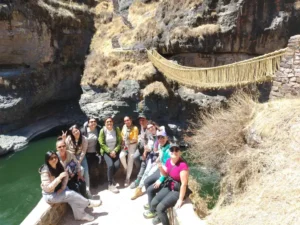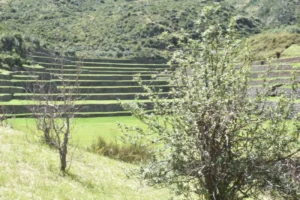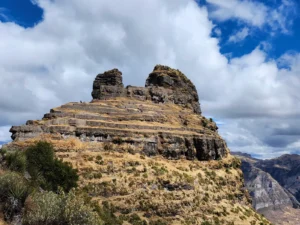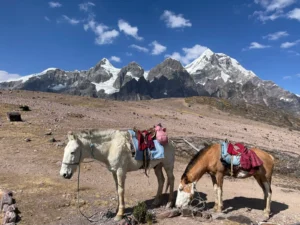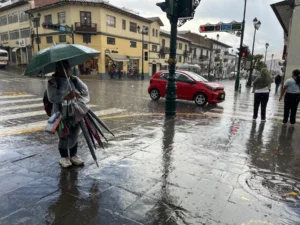Traditional Peruvian Clothing: A Living Cultural Legacy
Traditional Peruvian clothing represents a profound expression of identity, history and worldview. Each garment, weaving and embroidery tells a story that dates back to pre-Columbian times, fusing ancestral techniques with colonial and contemporary influences. This textile heritage not only reflects Peru’s geographic and cultural diversity, but also symbolizes the resilience and pride of its people.
Contents
The Andean Highlands: Color and Symbolism
In Andean regions such as Cusco, Puno and Ayacucho, traditional dress is still part of daily life in many communities. Women wear vibrantly colored skirts made from alpaca or sheep wool, accompanied by llicllas (woven cloaks) that represent elements of Andean nature and spirituality. The geometric designs, known as tocapus, have ancestral meanings linked to agriculture, astronomy and local deities.
The men, meanwhile, wear hand-woven vests and ponchos, the colors of which vary according to the community. The chullo, a wool cap with earflaps, is emblematic of the region and demonstrates the weavers’ ability to create functional and artistic pieces. In important ceremonies, it is common to see carved canes, symbols of authority and wisdom.

The Amazon: Nature and Spirituality
In the Peruvian jungle, traditional clothing is closely linked to the natural environment. Peoples such as the Shipibo-Conibo and Asháninka use plant fibers, seeds and feathers to create lightweight garments and ritual ornaments. The kené designs, characteristic of the Shipibo, are geometric patterns that represent shamanic visions and sacred songs.
Body painting also plays an important role, especially in ceremonies and festivities. The colors and motifs used convey messages about tribal identity, social status and connection to the spiritual world.

La Costa: Fusion of Traditions
Although dress on the Peruvian coast has evolved with greater external influence, it still retains traditional features in folkloric celebrations. For example, during the Feast of the Virgin of Candelaria in Lima, dancers wear colonial-inspired costumes, with straw hats and embroidered handkerchiefs. In the north, the Afro-Peruvian influence is manifested in colorful costumes and movements full of rhythm, such as those of the festejo and the marinera.

Techniques and Sustainability
The elaboration of these garments follows ancestral methods passed down through generations. Backstrap loom weaving, dyeing with plants such as cochineal and hand embroidery are techniques that require patience and mastery. Today, many communities work to preserve this knowledge while adapting to modern markets, promoting fair trade and experiential tourism.
Validity in the Modern World
Although globalization has introduced changes in the way we dress, traditional Peruvian clothing maintains its relevance in festivities, rituals and artistic expressions. In addition, national and international designers have incorporated these elements in fashion collections, revaluing their beauty and meaning.
Conclusion
Traditional Peruvian clothing is a living testimony of the country’s cultural richness. Each thread, each color and each design holds stories of resistance, creativity and connection to the land. Valuing and preserving it not only honors those who create it, but also enriches our understanding of a legacy that transcends time.


